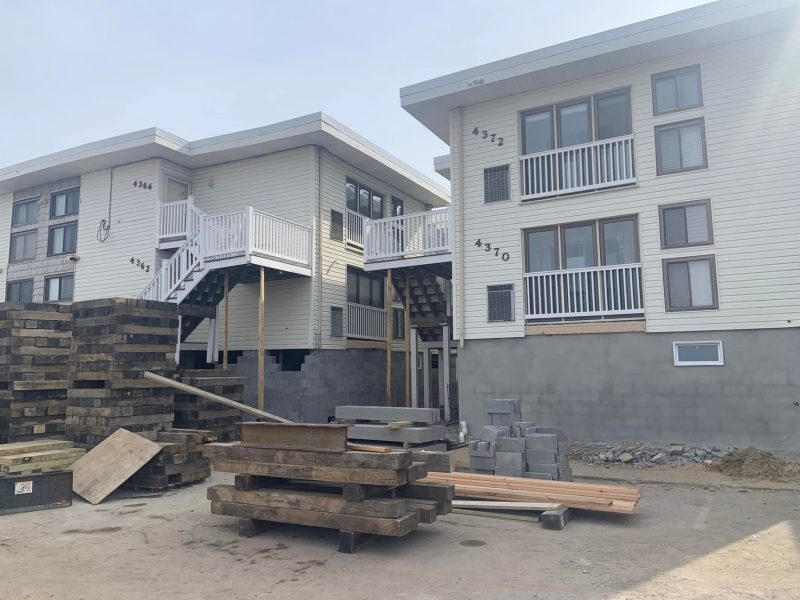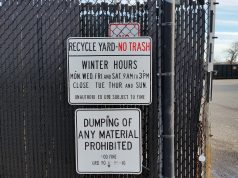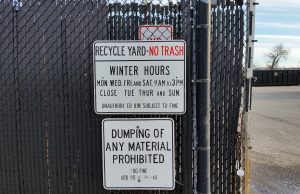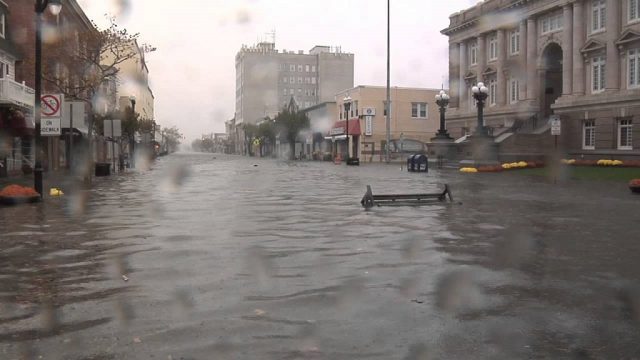
The following is a statement from Ocean City on the 10th anniversary of Superstorm Sandy:
Recognizing the threats of coastal flooding and rising seas, Ocean City has taken a leading role in investing in solutions.
On the 10th anniversary of the devastating Superstorm Sandy making landfall about 12 miles away, Ocean City remains committed to elevating homes and infrastructure, installing pumping stations, replacing bulkheads and barriers, creating living shorelines, purchasing open space and various other measures that are vital to protecting the island and its residents.
The city secured a $3 million federal grant to elevate 52 units of a flood-prone, seven-building condominium complex, and the residents moved back in earlier this year.
Work is currently underway on a project to add pumping stations and replace the storm drainage system for the bayfront West 17th Street neighborhood.
Ocean City Mayor Jay Gillian announced last month that Cape May County will partner with Ocean City on another major project to elevate the 34th Street gateway to the island and bring a new phase of flood mitigation to Merion Park and other nearby residential neighborhoods.
These are just a few of the recent flood mitigation projects.
Over the past 10 years, Ocean City has dedicated an average $10 million a year to roads, drainage and flood mitigation, and many of its programs and partnerships are held up as models throughout coastal New Jersey. The city remains committed to addressing all priority areas within the next 10 years.
The city’s efforts are essentially three-pronged: 1) lifting homes, roads and infrastructure above flood levels, 2) using dunes, bulkheads and barriers to hold back flood waters, and 3) providing engineering and natural solutions to slow the rate of flooding and increase the rate of drainage.
These initiatives have been achieved through the adoption of local ordinances, grants and incentives to private owners, partnerships with governmental and interest groups, and a substantial capital investment program.
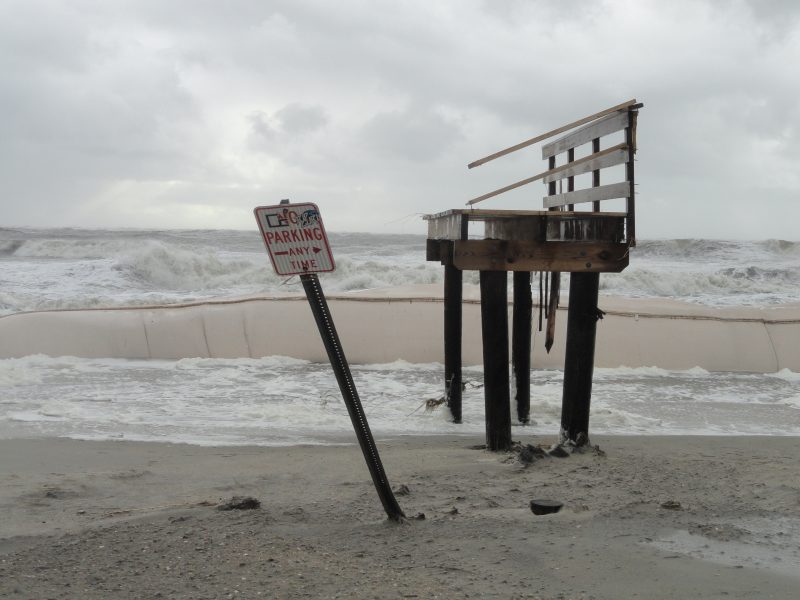
Elevation
- New zoning and construction ordinances require all new and substantially renovated/rebuilt homes in the city to be elevated at least two feet above the 100-year flood elevation defined by the Federal Emergency Management Agency (FEMA). A series of ordinances defines the lowest permissible floor elevations in relation to flood elevations.
- The city has worked in partnership with federal and state agencies to assist property owners in obtaining grant funding to elevate homes.
- Flood Mitigation Assistance (FMA) grants to date elevated 15 repetitive loss homes in Ocean City. Hazard Mitigation Grant Program (HMGP) funds elevated another eight homes in Ocean City.
- Through various reconstruction projects, 210 homes on Ocean City’s “Severe Repetitive Loss” list have been elevated, and 114 on the “Repetitive Loss” list have been elevated.
- The city is systematically elevating streets and infrastructure wherever possible and practical. Since an expanded capital improvement program went into effect after Sandy, more than 50 percent of Ocean City’s roadways have been rebuilt.
- The 500 block of West Avenue, where street flooding routinely required firefighters to carry Ocean City Primary School students through floodwaters, was elevated by more than 18 inches, eliminating flooding in all but major flooding events.
- The stretch of Third Street between Bay Avenue and West Avenue – one of the lowest roadways on the island – was elevated by as much as two feet. The city coordinated with private owners to have grades match the new elevations.
- A stretch of Bay Avenue near Third Street (and near a gap in the otherwise continuous bayside bulkhead) was substantially elevated to prevent tidal waters from breaching the roadway.
- Acquisition of two abandoned gas stations at the foot of the Ninth Street Bridge and conversion to an elevated open space park will allow for future elevation of this emergency access route.
- West 55th Street was elevated as part of an ongoing road improvement program at the south end that has included elevation of street ends at 45th Street, 46th Street, 47th Street and 48th Street.
- The super-elevation of West 52nd Street from Bay Avenue to the marshes to establish a natural barrier to flooding was also part of this work. Ocean City also used the same concept on 56th Street from West Avenue to Ocean Drive.
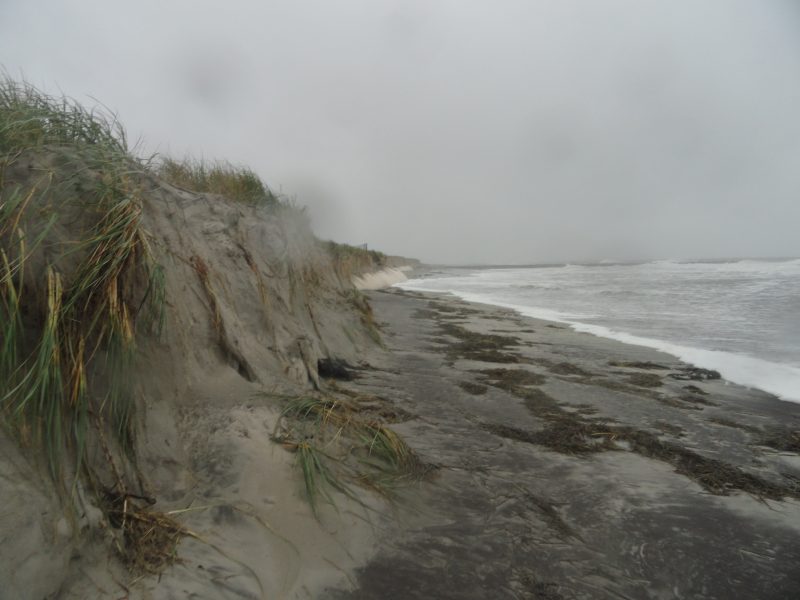
Barriers
- Ocean City has a 50-year agreement with the Army Corps of Engineers and state Department of Environmental Protection for beach and dune renourishment at 3-year intervals. This has led to an uninterrupted line of protective dunes that stretches the length of Ocean City’s beachfront. Staging for the latest renourishment project for Ocean City’s north end has begun, and sand-pumping operations are expected to begin in November.
- A new ordinance approved in the wake of Sandy requires minimum elevation of non-oceanfront bulkheads at 7 feet NAVD88, and oceanfront bulkheads at 11’ NAVD88, with construction in compliance with the Flood Damage Prevention Ordinance.
- The city is working to complete replacement of all city-owned bulkheads along the bayfront to a minimum standard of 7 feet NAVD88.
- The city is studying various concepts to create a storm protection barrier along the marshes from 36th Street to 52nd Street, an area where there are no existing bulkheads.
Ocean City has buried geotextile tubes under the dunes along sections of the beach to provide an additional layer of defense during major storm events.
Other Measures
- The city has completed three major neighborhood drainage projects addressing flooding at the most vulnerable areas of town.
The projects have included complete replacement of the storm drainage system with a network of stronger, straighter and bigger drainage pipes, the regrading and repaving of streets and gutters to move storm water into the drainage system, and the addition of 10 pumping stations to increase the rate of drainage – even during high tides.
While these systems cannot prevent the biggest storm flooding events, they have largely eliminated nuisance flooding. The city utilized a $4.9 million HMGP grant as part of this program. The city is using these projects as models for new planned drainage projects across the length of the island.
- In partnership with the National Fish and Wildlife Foundation and state DEP, the city has started a living shoreline project to restore Shooting Island to its historic profile from 40 years ago. The project includes both rock sill and oyster habitat. The island is an important barrier to wave action on Ocean City’s bay side. The city is seeking grants to complete phase two of this project in partnership with the National Fish and Wildlife Foundation.
- The city has restarted its dredging program, removing more than 500,000 cubic yards of material from all channels and lagoons on the bay side.
- The city acquired an entire city block to save it from residential development and to turn a fully paved former car dealership into open space.
- Ocean City participates in the NFIP Community Rating System (CRS) and continues to work to improve their CRS rating through various CRS activities. The city was recently notified that it has achieved Level 4 certification. Only one municipality in the state has a higher rating.
- The city is fully prepared to capitalize on its strong foundation of flood mitigation and resiliency work to take advantage of all grant and funding opportunities that are becoming available as a result of the recently passed federal infrastructure bill.
-

The seven-building Ocean Aire condo complex has been elevated to protect it from chronic flooding in the south end of the island.


